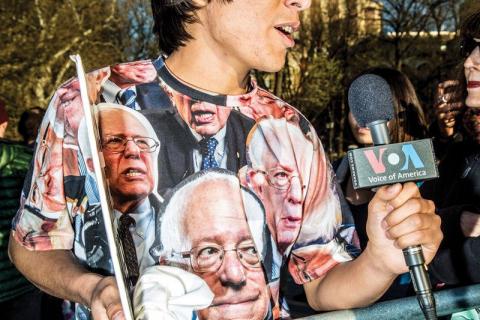Throughout most of the 2016 presidential primaries, the media focused on the noisy and reactionary rift among Republicans. Until the battle between Hillary Clinton and Bernie Sanders turned acrimonious in the home stretch, far less attention was paid to the equally momentous divisions within the Democratic Party. The Clinton-Sanders race wasn’t just about two candidates; instead, it underscored a series of deep and growing fissures among Democrats, along a wide range of complex fault lines—from age and race to gender and ideology. And these disagreements won’t fade with a gracious bow-out from Sanders, or a victory in November over Donald Trump. For all the talk of the Democrats’ need for “unity,” it would be a serious mistake to paper over the differences that came to the fore in this year’s primaries. More than ten million Democrats turned out in force this year to reject the party establishment’s cautious centrism and cozy relationship with Wall Street. Unless Democrats heed that message, they will miss a historic opportunity to forge a broad-based and lasting liberal majority.
To help make sense of what’s causing the split, and where it’s headed, we turned to 23 leading historians, political scientists, pollsters, artists, and activists. Taken together, their insights reinforce the need for a truly inclusive and vigorous debate over the party’s future. “There can be no settlement of a great cause without discussion,” observed William Jennings Bryan, the original Democratic populist insurgent. “And people will not discuss a cause until their attention is drawn to it.
”It goes way, way back BY RICK PERLSTEIN
The schism between Hillary Clinton and Bernie Sanders is knit into the DNA of the modern Democratic Party, in two interrelated ways. The first is ideological: the battle of left versus right....
The party hasn’t kept up with its base JILL FILIPOVIC, LAWYER AND POLITICAL COLUMNIST
The party itself has been stuck in some old ideas for a while. You’ve been seeing movement around the edges, whether from Elizabeth Warren or these grassroots movements for income inequality. The pro-choice movement, for example, is a key part of the Democratic base that has liberalized and modernized and completely changed its messaging in a way that the party is now just catching up to. So you get these internal discords that dredge up a lot of bad feelings....
Poverty is fueling the divide BY KEEANGA-YAMAHTTA TAYLOR
The Democratic Party today engages in delusional happy talk about economic recovery, while a staggering 47 million Americans are struggling in poverty. As the rich remain as wealthy as ever, working-class people continue to see their wages stagnate. In the 1970s, 61 percent of Americans fell into that vague but stable category of “middle class.” Today that number has fallen to 50 percent. African Americans, the core of the Democratic Party base, continue to be plagued by dead-end jobs and diminished prospects. Fifty-four percent of black workers make less than $15 an hour. Thirty-eight percent of black children live in poverty. More than a quarter of black households battle with hunger....
Read more here.


Spread the word